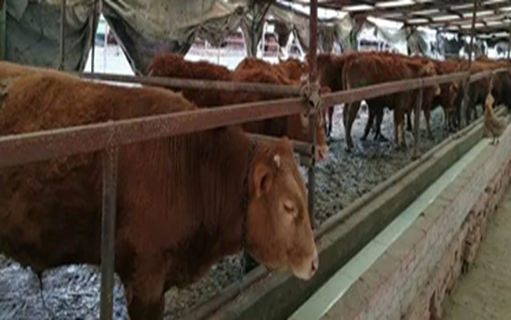There are also more and more large and small farms. While meeting people’s meat needs, they also produce a large amount of livestock and poultry manure. The reasonable treatment of manure can not only effectively solve the problem of environmental pollution, but also turn waste. Weibao generates considerable benefits and at the same time forms a standardized agricultural ecosystem.
refers to carbon-containing organic materials that are mainly derived from plants and/or animals and are fermented and decomposed. Their function is to improve soil fertility, provide plant nutrition, and improve crop quality. It is suitable for organic fertilizers made from livestock and poultry manure, animal and plant residues and animal and plant products, which are fermented and decomposed.
The nutrient content of cow manure is low. It contains 14.5% organic matter, 0.30~0.45% nitrogen, 0.15~0.25% phosphorus, 0.10~0.15% potassium, and high cellulose and lignin content. There are a lot of organic matter that is difficult to decompose in cow dung, which has a good effect on improving the soil.
Internet references show that different animal manures must be added with different content of carbon adjustment materials due to their different carbon-nitrogen ratios. Generally, the carbon-nitrogen ratio for fermentation is about 25-35. The carbon to nitrogen ratio of cow dung is about 14-18.The carbon-nitrogen ratio of the manure of livestock and poultry from different regions and different feeds will also be different. It is necessary to adjust the carbon-nitrogen ratio to make the pile decompose according to the conditions of each region and the actual carbon-nitrogen ratio of the manure.
|
||||||||||||||||||||||||||||||||||||||||
|
Cow dung excretion estimate reference. Data source network is for reference only |
||||||||||||||||||||||||||||||||||||||||
|
Livestock and poultry species |
Daily excretion kg |
Annual excretion/metric ton |
Number of livestock and poultry |
Approximate annual output of organic fertilizer/metric ton |
||||||||||||||||||||||||||||||||||||
|
400 kgbeef cattle |
25 |
9.1 |
1,000 |
6,388 |
||||||||||||||||||||||||||||||||||||
Production process of cow manure organic fertilizer:
Fermentation→crushing→stirring and mixing→granulation→drying→cooling→screening→packing and warehousing.
1. Fermentation:
Sufficient fermentation is the basis for the production of high-quality organic fertilizer. The pile turning machine realizes thorough fermentation and composting, and can realize high pile turning and fermentation, which improves the speed of aerobic fermentation.
2. Crushing:
The grinder is widely used in the organic fertilizer production process, and has a good crushing effect on wet raw materials such as chicken manure and sludge.
3. Stirring:
After the raw material is crushed, it is mixed with other auxiliary materials evenly and then granulated.
4. Granulation:
The granulation process is the core part of the organic fertilizer production line. The organic fertilizer granulator achieves high-quality uniform granulation through continuous mixing, collision, inlay, spheroidization, granulation, and densification.
5. Drying and cooling:
The drum dryer makes the material fully contact with the hot air and reduces the moisture content of the particles.
While reducing the temperature of the pellets, the drum cooler reduces the water content of the pellets again, and approximately 3% of the water can be removed through the cooling process.
6. Screening:
After cooling, all powders and unqualified particles can be screened out by a drum sieving machine.
7. Packing:
This is the last production process. The automatic quantitative packaging machine can automatically weigh, transport and seal the bag.
Introduction to the main equipment of the cow dung organic fertilizer production line:
1. Fermentation equipment: trough type turning machine, crawler type turning machine, chain plate turning and throwing machine
2. Crusher equipment: semi-wet material crusher, vertical crusher
3. Mixer equipment: horizontal mixer, pan mixer
4. Screening equipment: drum screening machine
5. Granulator equipment: stirring tooth granulator, disc granulator, extrusion granulator, drum granulator
6. Dryer equipment: drum dryer
7. Cooler equipment: drum cooler
8. Auxiliary equipment: quantitative feeder, automatic quantitative packaging machine, belt conveyor.
Mainly from the following factors to control the fermentation process:
Moisture content:
In order to ensure the smooth progress of composting during the composting process, the amount of water in the initial stage of composting should be maintained at 50-60%. After that, the moisture is kept at 40% to 50%. In principle, no water droplets can leak out. After fermentation, the moisture content of the raw materials should be controlled below 30%. If the moisture content is high, it should be dried at 80°C.
Temperature control:
Temperature is the result of microbial activity. Stacking is another way to control temperature. By turning the stack, the temperature of the stack can be effectively controlled to increase the evaporation of water and allow fresh air to enter the stack. Through constant turning over, the temperature and high temperature time of fermentation can be effectively controlled.
Carbon to nitrogen ratio:
Appropriate carbon and nitrogen can promote the smooth fermentation of compost. Microorganisms form microbial protoplasm in the organic fermentation process. Researchers recommend a suitable compost C/N of 20-30%.
The carbon to nitrogen ratio of organic compost can be adjusted by adding high-carbon or high-nitrogen substances. Some materials such as straw, weeds, dead branches and leaves can be used as high-carbon additives. It can effectively promote the growth and reproduction of microorganisms and accelerate the maturity of compost.
pH control:
The pH value affects the entire fermentation process. In the initial stage of composting, the pH value will affect the activity of bacteria.
Post time: Apr-28-2021

